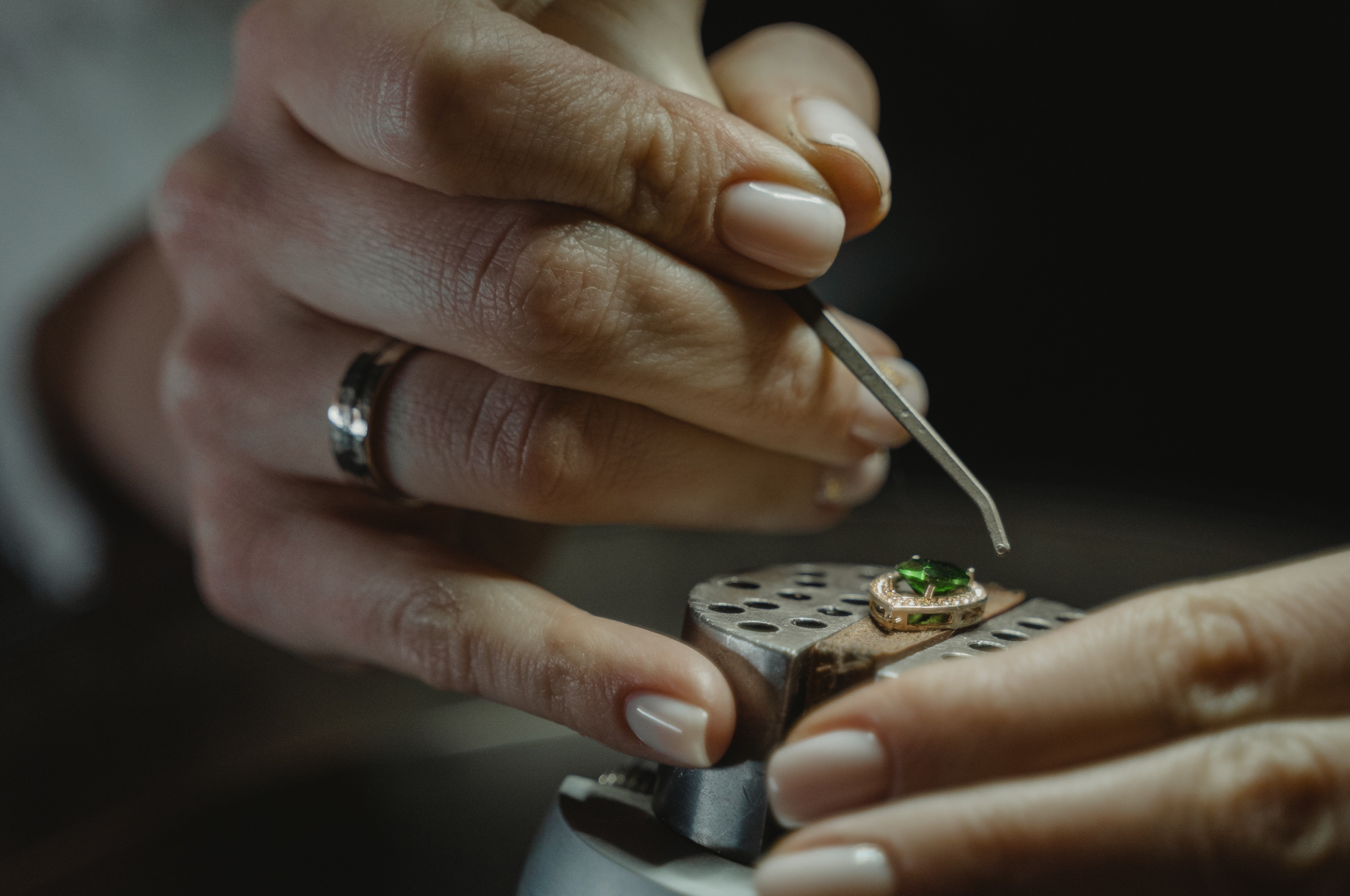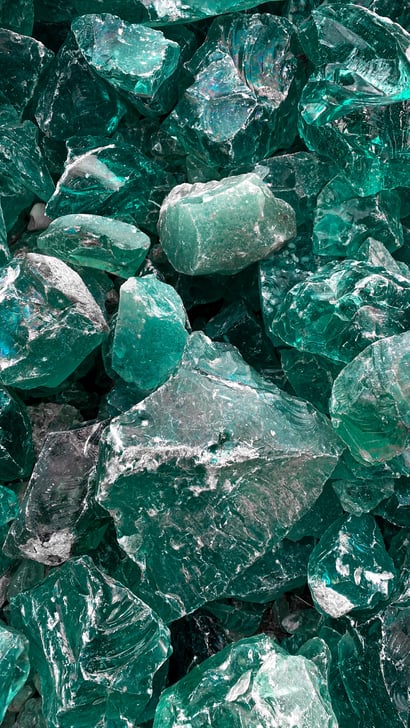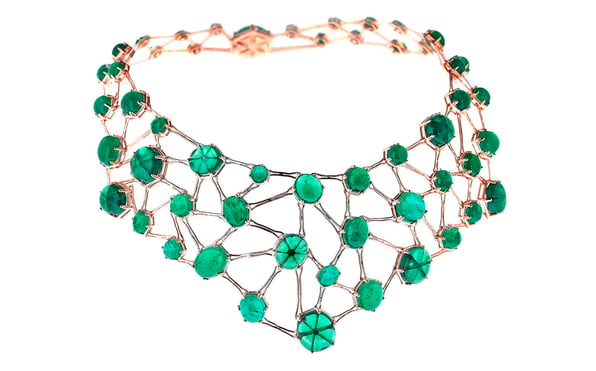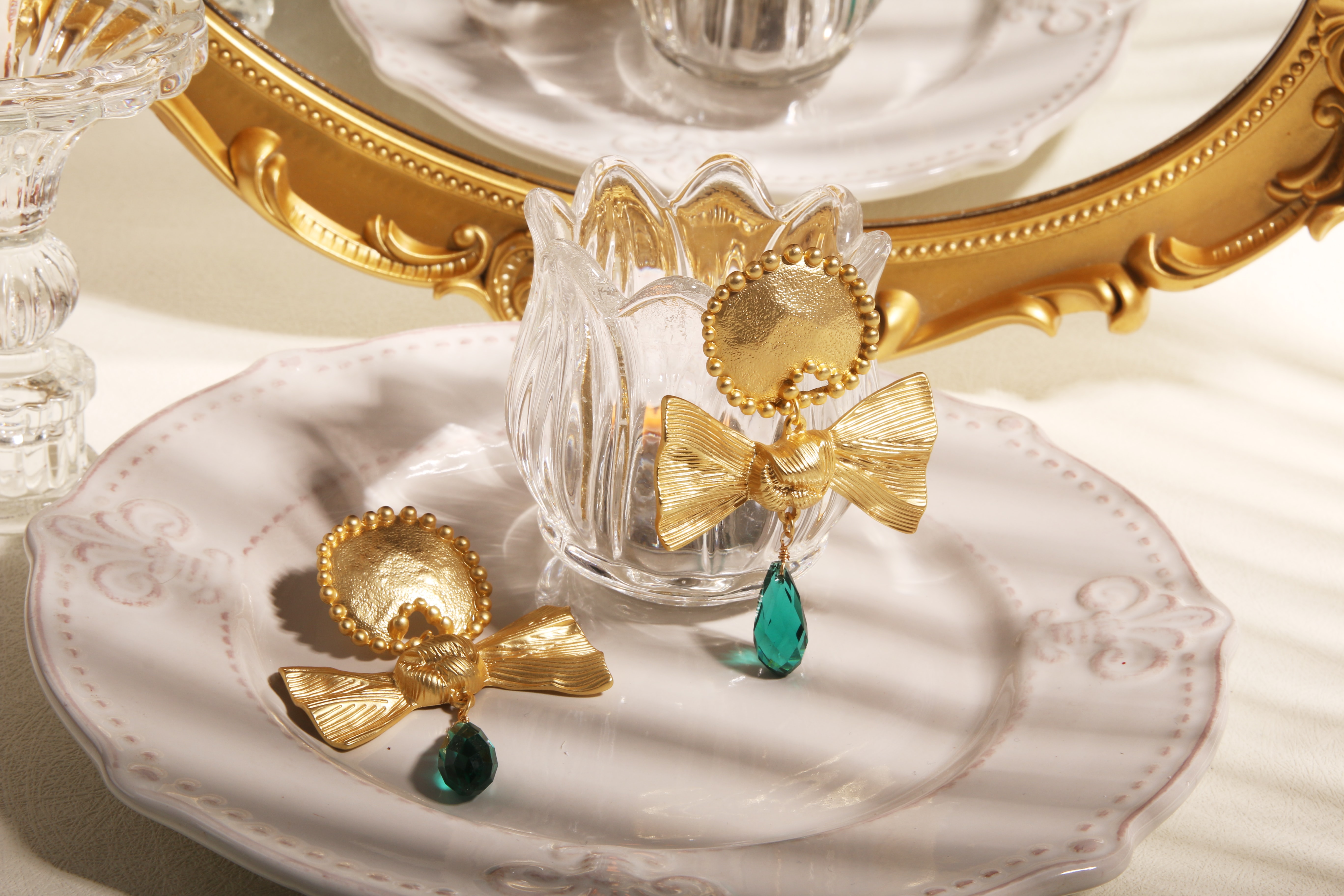
Emerald is one of the four precious stones, alongside ruby, sapphire, and diamond. It is known for its beautiful green color, found in different shades depending on the location. First used in jewelry during the time of Cleopatra’s reign, emeralds continue to be popular today.
A quick guide to emerald
| Specification | Details |
| Most Popular Colors | Green, Blue-Green, Yellow-Green |
| Most Popular Cut | Emerald |
| Hardness | 7.5 - 8 on Mohs Hardness |
Where are emeralds found?
Emeralds can be found in various locations around the world, and are made of the mineral beryl. Colombian rough emeralds are known for the highest quality, with Colombian mines producing emeralds that possess a warmer and intense pure green color. Brazilian mines are located in Bahia, Goias and Minas Gerais, and new deposits have been found since 1980, making Brazil one of the most important suppliers of emeralds. Since the last several decades, East African countries have also seen a series of small deposits, particularly in Zimbabwe, Zambia and Tanzania.
Some top exporters of emerald include:
- Colombia
- Brazil
- Zambia
- Ethiopia
- Zimbabwe

The many hues of emerald
Deep green emeralds are a rare occurrence and highly sought after, fetching a high price. These emeralds are most often found in Colombian mines, with colors ranging from a vivid green to a blue-tinted green, and are the most desirable for utilization in jewelry.
Brazilian emeralds are lighter in color, and tend to be yellow-green. A high quality Brazil emerald displays a natural glow, rich color, and good transparency which adds to its value, but lacks the green intensity that Colombian emeralds generally have. Brazil also produces the rare cat’s eye emerald and very rare six-spoke star emeralds, also known as Trapiche emeralds (shown in the image below).

Cuts & notes on durability
The most popular cut for emeralds in jewelry is the namesake emerald cut. This cut has a distinct rectangular shape, and was developed hundreds of years ago to best showcase an emerald’s beauty. The emerald cut has since been adopted for the majority of gemstones and is one of the most popular cuts for diamonds.
Emeralds range between a 7.5 to an 8 on the Mohs Hardness scale, making them sufficiently resistant to scratches or chipping caused by daily wear. However, some emeralds have inclusions that can compromise their durability, and cause them to break.
History & legend
Emerald gemstones were mined in Egypt as early as 330 BC, though some estimate that the oldest emeralds are more than two billion years old. During Cleopatra's reign in Egypt, demand for emeralds grew due to her preference for them, but the Egyptians also used emeralds in jewelry and in burial ceremonies, often burying emeralds with monarchs as symbols of protection.
Emeralds from what is now Colombia were part of the plunder taken by the sixteenth-century Spanish conquistadores. However, the Spanish, who valued gold and silver far more than gemstones, traded these emeralds for precious metals, and opened the eyes of European and Asian royalty to the beauty of emeralds.

Emeralds have been associated with healing and mystical properties within many ancient traditions. One belief was such that if an emerald were to be placed under the tongue or worn on the left side of the body, it would allow the wearer to see the future. Another said that wearing an emerald would reveal the truth or falsehood in a lover’s promise, or that it could make you a more honest and eloquent speaker.
Ancient Greeks associated emeralds with Aphrodite, the goddess of love, and recognised it as an eternal symbol of love. Ancient Romans similarly associated the emerald with Venus, the goddess of love and beauty, and said it would protect lovers from unfaithfulness. Falsehood and treachery would be recognised by the emerald, causing it to turn pale or change color. However, once the emerald’s powers had been used up, it was said that the stone would fall from its setting - considered a very bad omen.
Emeralds use in contemporary jewelry
Emerald is viewed as a very classic look, popular in vintage-inspired jewelry as Art Deco and Victorian-style pieces, and was used often in the Art Nouveau movement, which was known for its use of organic forms and natural motifs.
Additionally, in recent years the use of emeralds in combination with other gemstones has increased; desired combinations include emeralds with diamonds, or alongside sapphires or rubies.
Because of their value and rarity, emeralds are often used in engagement rings, as well as in statement jewelry pieces worn by celebrities and other high-profile individuals.



